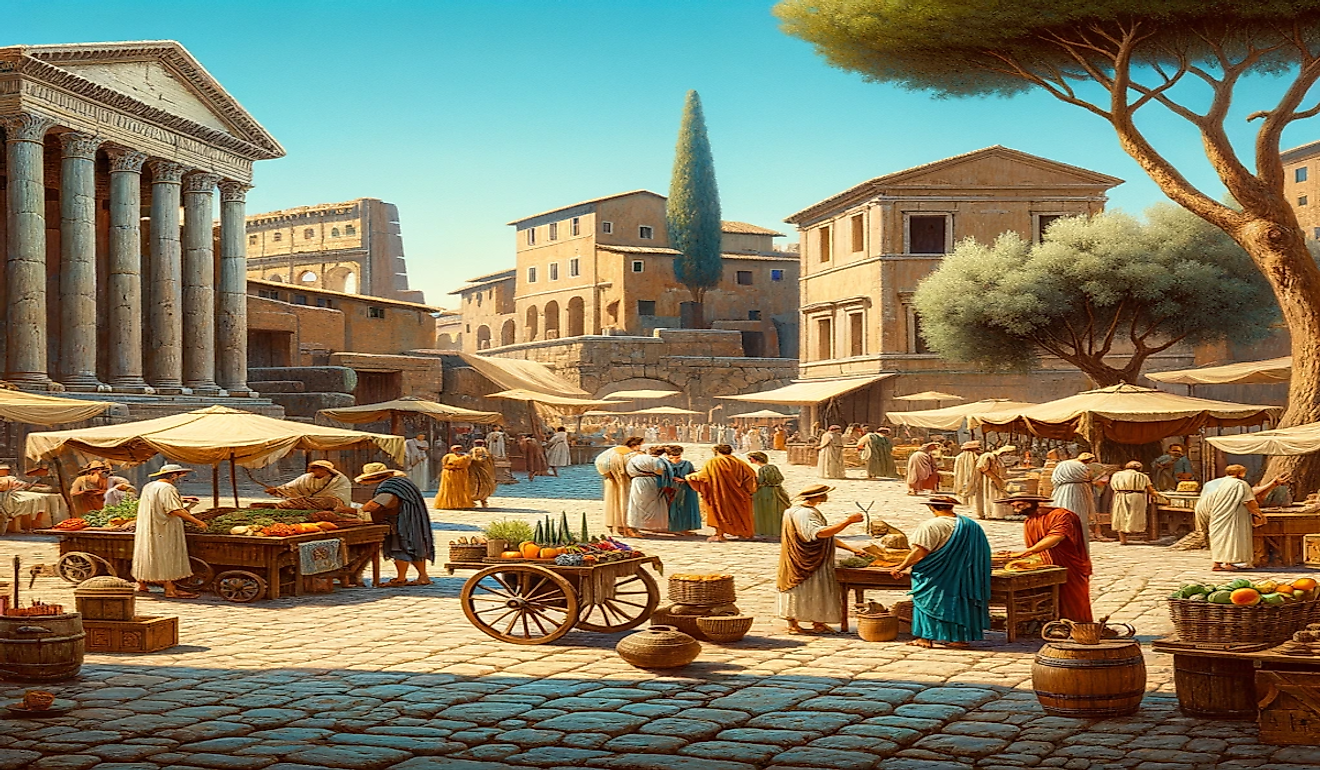
What Was Life Like In Ancient Rome?
The Roman Civilization lasted nearly a thousand years, between 625 BC and 476 AD, and managed to reign over 2.3 million square miles centered around the Mediterranean: approximately 70 million people lived under Rome's rule at its peak.
So, how did these people live? From military service and diet, to housing and entertainment, life in this ancient era was both shockingly different, as well as strikingly similar, to the way we live today. People are still people, after all.
Table Of Contents
| Way of Life | Key Facts |
|---|---|
| Housing and Living Conditions |
"Insulae" for the lower class; "domus" for the upper class. Nero's urban planning reforms. |
| Social Structure and Class Divide |
Status defined by wealth. Paterfamilias held authority over family members.
|
| Daily Meals and Diet |
Diet based on grains, vegetables, meats; communal meals common.
|
| Work and Economy |
Reliance on slavery; trade and roads vital for economy.
|
| Education and Literacy |
Private tutors for wealthy; limited education for poor. Greek influence on education.
|
| Public Health and Sanitation |
Public baths and aqueducts for hygiene; challenges in insulae.
|
| Religion and Rituals |
Rich pantheon of gods; Christianity's rise under Emperor Constantine.
|
| Entertainment and Leisure |
Gladiator contests, chariot races, baths, and festivals key to social cohesion.
|
| Military Life and Expansion |
Legion crucial for expansion; military settlements integrated local populations.
|
| Art and Architecture |
Greek influence; patronage displayed status. Engineering feats like aqueducts and roads.
|
| Fashion and Personal Adornment |
Clothing and adornments indicated social status. Influence of foreign cultures on fashion.
|
Housing and Living Conditions
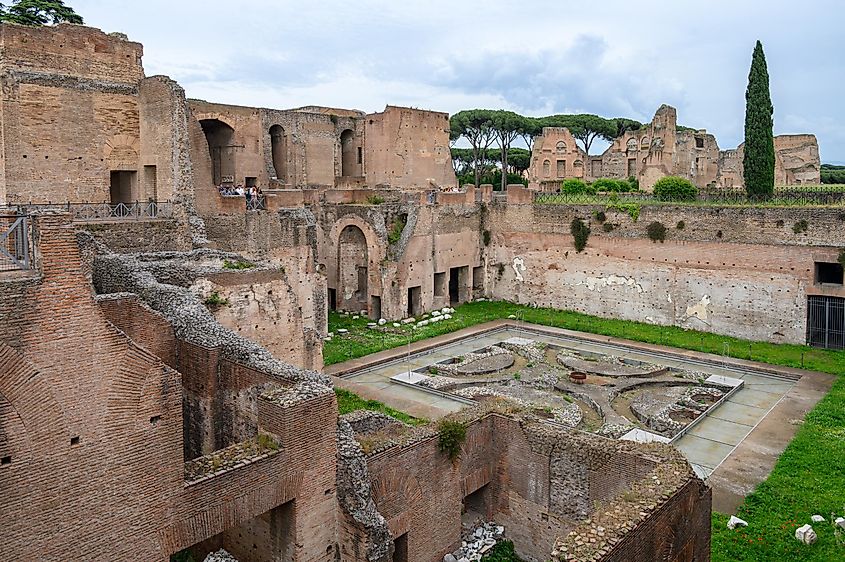
In ancient Rome, there were two predominant, albeit distinct, styles of housing: Insulae and Domus. Insulae were multi-story apartment buildings primarily inhabited by the lower and middle classes. These structures were often cramped, with multiple families sharing a single unit, leading to overcrowded living conditions. Basic amenities such as water and sanitation were limited, contributing to challenging living environments. "Plebians," a term for lower-class citizens, were typical occupants of insulae.
Conversely, domus were spacious, single-family homes with multiple rooms, gardens, and often luxurious decorations. These residences were available to the upper class, who could afford such comfort and privacy. Wealthy individuals typically lived on Palatine Hill, a location that symbolized social status.
Following the vacuum of space left by the Great Fire of 64 AD in Rome, Emperor Nero initiated urban planning reforms that aimed to address some of the city's housing challenges. Grain was sold at a cheaper rate, spaces for refugees were established, and new buildings were built to replace the old. However, the mystery of the event is the common accusation that Nero purposefully caused the fire to further his own political goals, but this allegation is impossible for historians to verify.
Social Structure and Class Divide
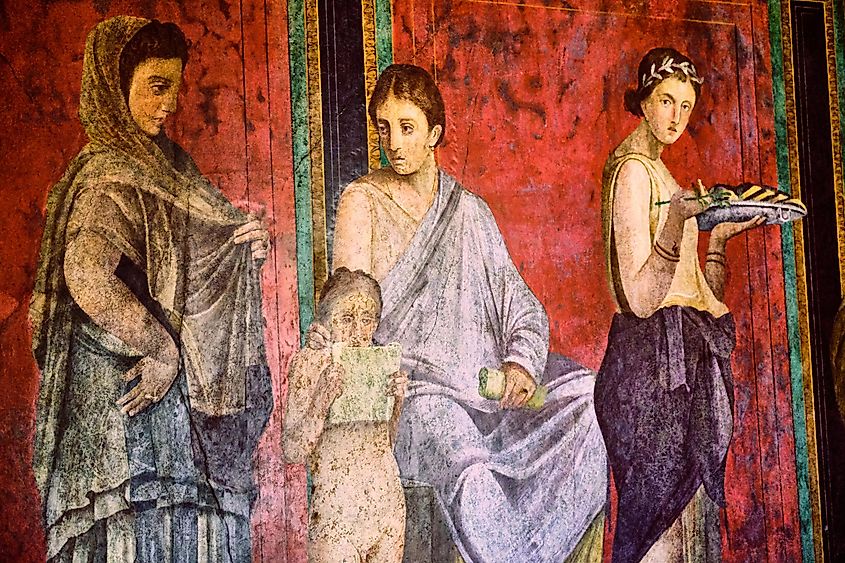
As mentioned with the distinction of inhabitants between insulae and domus, social hierarchy in ancient Rome was clearly defined, separating the wealthy elite from the general populace. The economy and society at large were heavily reliant on slavery, with both slaves and freedmen occupying the majority of roles in both domestic and public spheres.
Social status greatly influenced one's daily life, including aspects such as housing, diet, and permitted activities. The paterfamilias, or male head of the household, held significant authority over family members, impacting family dynamics and decision-making. Over time, women experienced a gradual enhancement of their legal rights and social standing, although disparities remained.
Oddly enough, there were occasional circumstances where freedmen sold themselves into slavery as a route to escape poverty. The majority, however, were prisoners of war, sailors who had been captured and sold by pirates, and slaves bought from adjacent civilizations.
Daily Meals and Diet
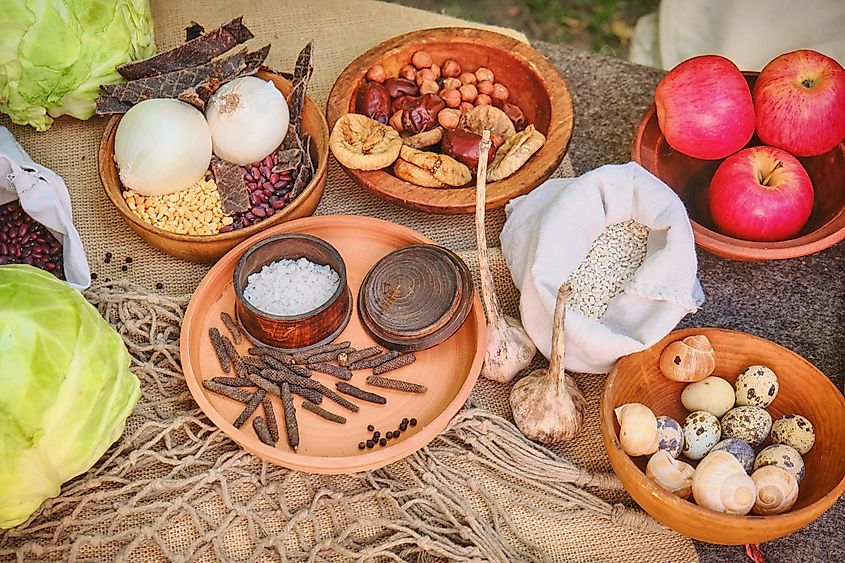
The common diet consisted of grains, vegetables, and meats, with the type and quality of that food again depending on social and economic standing. Meals were typically divided into breakfast, lunch, and dinner, with dinner being the most significant meal of the day.
For the wealthy, dining was an elaborate affair featuring multiple courses and exotic dishes, and the rite was a tool to pronounce the affluence of the host. In contrast, the diet of the lower classes was far simpler, often centered around porridge and bread due to economic constraints. Interestingly, archaeologists have discovered preserved molds of baked bread in the volcanic ruins of Pompeii, with 'baker stamps' visible on the loaves that are similar to the way bread is prepared today.
Despite the difference in diet between classes, communal eating was common in Roman society, with meals serving as important social occasions. After all, cooking in bulk is far more efficient and less wasteful than smaller, individual meals. It is noteworthy that many modern Italian ingredients were absent from the Roman diet; many of these ingredients, like tomatoes, came after the discovery of the Americas a thousand years later.
Work and Economy
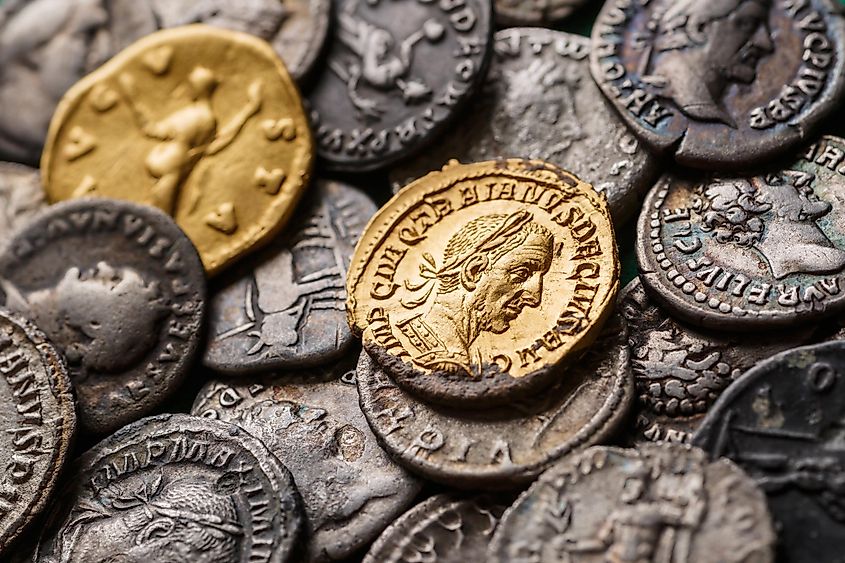
Fun fact: salt was often used as a currency in ancient Rome. Yet, as mentioned earlier, the economy of ancient Rome was significantly shaped by the prevalence of slavery. Slaves were employed in various capacities, from household servants to skilled artisans, and their labor was a foundational element of the economic structure. This reliance on slave labor had a noticeable impact on employment opportunities for free citizens, as many jobs were filled by slaves.
This dynamic made it difficult for many to find stable employment, especially in urban areas where competition was fiercer. The movement of populations from rural to urban centers exacerbated these challenges as more people competed for limited job opportunities in the major cities of the empire.
Despite this, free Romans could engage in a variety of professions and trades. Artisans, merchants, farmers, and soldiers formed the backbone of the Roman economy, and the masterful roads created by the soldiers allowed trade and travel to flourish.
On that note, trade and conquered resources were essential to maintaining the momentum of the Roman economy, but currency instability and wealth disparity were weaknesses that were caused by, and thus further increased, the growing poverty rates and unrest. In short, the production techniques of the time were simply not enough to match needs and demands.
Education and Literacy
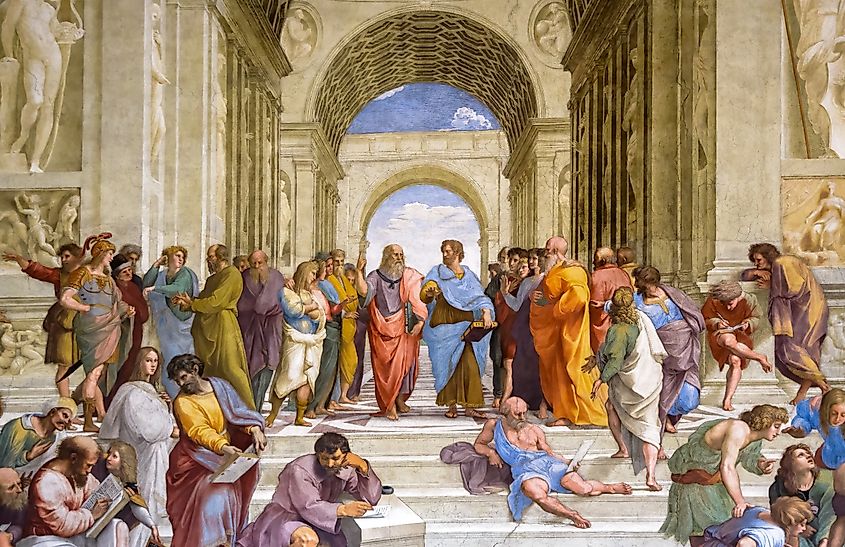
Like other spheres, the distribution of educational opportunities in Rome was also heavily influenced by social class. Wealthy families could afford private tutors, providing their children with a comprehensive education that included literature, philosophy, mathematics, and rhetoric. Formal schooling was another privilege of the affluent, further entrenching social divides.
Conversely, education for the poor and enslaved was severely limited, with few avenues available for advancing their knowledge or skills. Literacy was highly valued in Roman society, serving as a marker of social status and a prerequisite for many positions of power and influence. This adoration for knowledge and education was inherited from Rome's neighbor, Greece.
Greek culture played a significant role in shaping Roman education, introducing Romans to a broad array of philosophical and scientific concepts. Over time, the education of women saw gradual improvements, with some in the higher class receiving rudimentary education in reading and writing.
Public Health and Sanitation
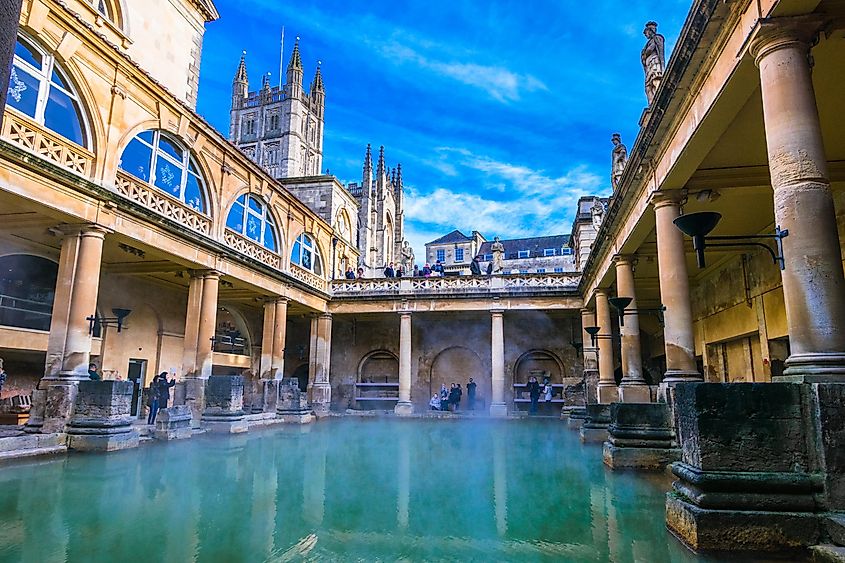
For those with access, public baths were optional centers for hygiene and socializing, and they were popular because they provided some respite from the challenges of daily life. The implementation of hypocausts (underground chambers that utilized pipes and fires to heat waters) alongside the water flowing in from aqueducts was a revolution in relaxation and self-care.
Some of the facilities in these bathhouses included changing rooms, exercise rooms, cold and warm baths, dry and wet saunas, and sizable swimming pools. Early on, only men were allowed to utilize these spaces, but entrances and designs were slowly implemented to grant a shared space for women as well.
However, public health in Rome faced considerable challenges, particularly in the densely populated apartment complexes known as insulae. These buildings, often lacking basic sanitation facilities, were breeding grounds for disease. The Cloaca Maxima, one of the earliest sewage systems, attempted to address sanitation within the city by removing waste from public areas.
Roman engineers heavily utilized pipes made from terracotta, wood, and lead. Notably, lead is a toxic material that can affect mental health in populations, but modern experts are reluctant to connect Rome's eventual demise with theories of widespread lead poisoning.
Religion and Rituals
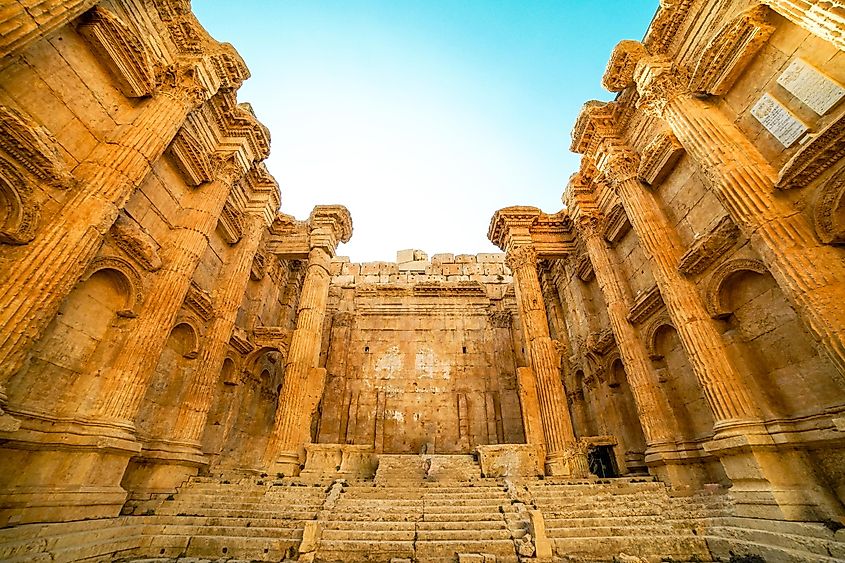
In ancient Rome, the pantheon of gods encompassed not only native deities (many of whom were directly gleaned from Greek gods) but also those assimilated from conquered territories and allied nations. Religious observances were meticulously practiced in both the private sphere of family life and in the public domain, with state officials overseeing grand sacrifices and rituals to honor the gods and secure their favor for the community.
Furthermore, the Roman calendar was filled with festivals and public holidays that were religious in nature, providing a rhythm to the civic and agricultural year. Frequent festivals were a common social tool in many past civilizations that kept the populace satisfied, rested, and fed, which lessened the chance of unrest.
Furthermore, practices such as augury and divination were integral to decision-making processes that decided the outcomes of battles and the success of crops. It is important to remember that, over time, many of these religious practices were left behind due to the influence of Christianity. Emperor Constantine's (ca AD 280– 337) conversion paved the way for the Church's expansion, and pagan practices that celebrated many deities (as opposed to Christian monotheism) were weakened by the sudden loss of the state's direct support.
Entertainment and Leisure

Entertainment in Roman society was equal parts adrenaline and creativity, with events like gladiator contests and chariot races being among the most celebrated aspects of Roman culture. These games, held in grand amphitheaters and circuses throughout the empire, were more than mere pastimes; they served as a means for emperors and politicians to gain favor with the populace and as a mechanism for reinforcing social norms and values.
The construction of large baths that doubled as spaces for community and sport, such as those built by Trajan, Caracalla, and Diocletian, established spaces for relaxation, exercise, and intellectual conversation across different social strata.
Dinner parties and public festivals further facilitated social cohesion, allowing Romans from various backgrounds to engage in communal celebrations. In nearly every sizable Roman settlement across the ancient world, arenas and baths are repeatedly present. That emphasis on universal access speaks to Roman policy, which strategically invested in a shared sense of unity and identity across the breadth of its empire, a wise move considering it was made up of countless cultures.
Military Life and Expansion
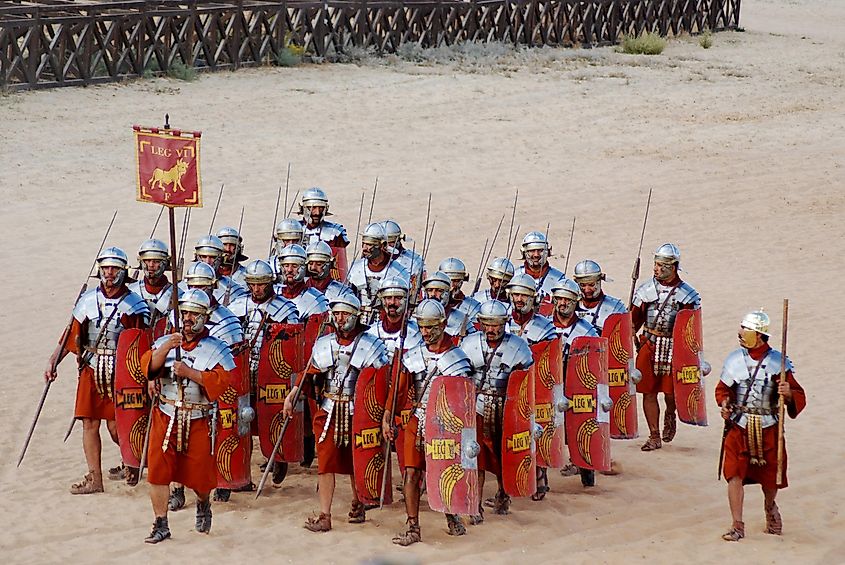
As it tends to be for all imperial civilizations, the military was the backbone of the Roman Empire, enabling its expansion across three continents alongside the establishment of Roman law, culture, and infrastructure in conquered territories. The Roman Legion, with its well-trained soldiers and sophisticated tactics, was crucial in this endeavor.
Soldiers were often granted citizenship as a reward for service, which implied defending the empire's borders as well as spreading Roman influence. Military settlements in newly conquered areas were essential to maintain the results of far-away victories, as these settlements facilitated the Romanization of local populations, a key step in merging them into Rome's economic and social systems.
Many leaders and emperors utilized the loyalty of troops that they directly commanded to seize and maintain power. Additionally, military campaigns were critical to maintain a steady flow of wealth and resources into Rome. However, as the empire reached its territorial peak, there were inevitable challenges in managing its vast borders. Internal strife and a decline in military efficiency compounded with that reality, and these weaknesses undermined Rome's ability to control its domains. Ultimately, the Roman Empire was torn apart, albeit slowly.
Art and Architecture
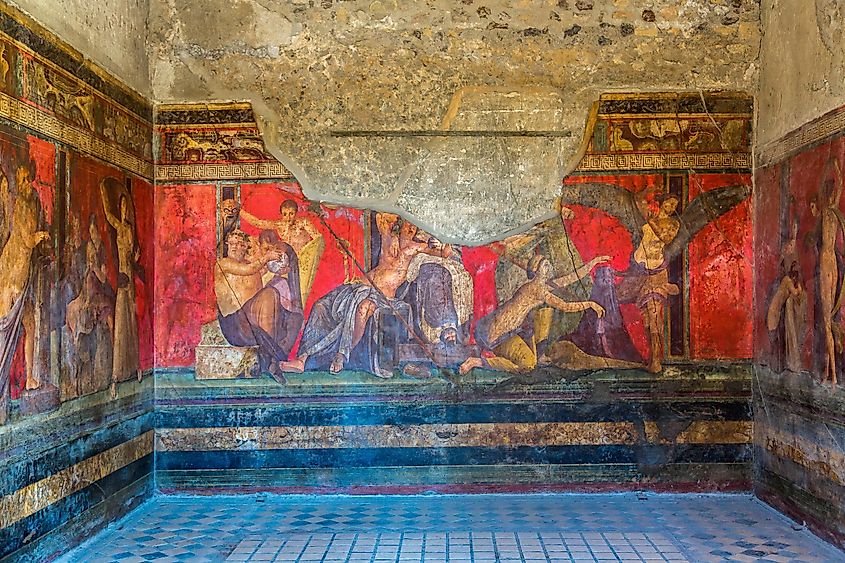
Roman art drew from Greek artistic techniques and styles, particularly in sculpture and painting, which depicted gods, figures, and myths. Romans applied these methodologies, integrating them into their own artistic creations. Art forms such as sculptures, mosaics, and frescoes, prevalent in both public and private realms, portrayed religious, mythological, and everyday scenes. Art patronage (wherein artists were sponsored by wealthy members of society) was a method for the elite to exhibit social status and personal beliefs.
Engineering projects like aqueducts and roads facilitated empire cohesion, communication, and water distribution. Those engineering innovations allowed for the creation of sophisticated public buildings and monuments, including forums, amphitheaters, and temples, that were central to Roman life.
Remnants of Roman engineering are prevalent in ruins, as well as aqueducts like Pont Du Gard that are still used today despite being nearly two thousand years old. The ruins of Pompeii, mentioned earlier in Daily Meals and Diet, are a reservoir of information about Roman daily life because the volcanic ash preserved structures, art, and even the last moments of individuals buried in that tragic event.
Fashion and Personal Adornment
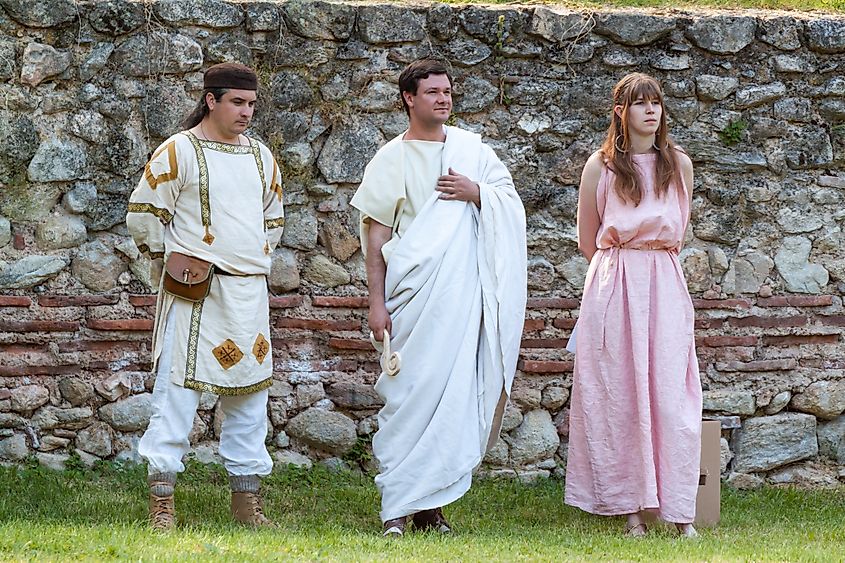
Clothing styles in Rome served as indicators of social status, profession, and gender. The toga, reserved for Roman citizens, symbolized civic privilege, while the stola identified freeborn women and matrons, reflecting their marital status and respectability. Such garments, made from wool, linen, and silk, varied in quality and decoration according to the wearer's rank and wealth.
Jewelry and cosmetics were widely used among both men and women, not just for aesthetic appeal but also to signify social standing and personal wealth once again. These adornments, crafted from gold, silver, gemstones, and other precious materials, often featured intricate designs that reflected the wearer's taste and the artistic trends of the time.
Interestingly, the influence of foreign cultures on Roman fashion was significant, with the empire's expansion bringing a variety of styles and materials into Rome. The Mediterranean Sea proved an invaluable asset in the transport of valuable goods, including textiles, and the exchange of fabrics became an industry of its own. As the ages lumbered forward, Roman fashion evolved, and vibrant colors like indigo, dark blue, and red became applicable when merchants as far away as India could bring their goods.
Final Thoughts
Rome set the standard for imperial power and wealth. Comparing the daily life of citizens in ancient Rome and medieval Europe is an effective way to gauge merit: running water, sewage systems, heated bathhouses, and quality roads are luxuries that cannot be taken for granted. Yet, while the Roman way of life did not last forever, the impact it had on the world is unmistakable.











